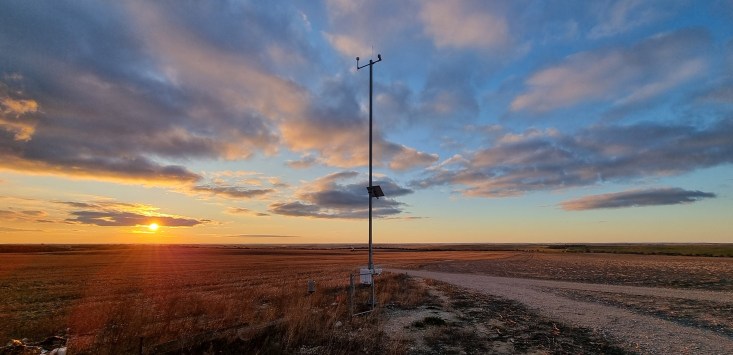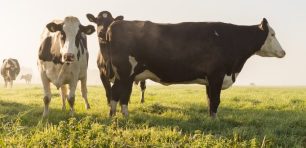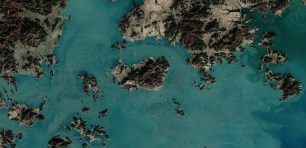
Part of the COtL Mesonet network in Wynarka. Source: Twitter/COTl Mesonet
Conditions Over the Landscape (COtL) is a local agricultural technology company that establishes and manages high-quality public weather station networks in agricultural regions.
These weather station networks – also known as ‘Mesonets’ – provide reliable data in real-time for a range of metrics including temperature, rainfall, frost, fire danger and spray drift hazard alerts.
Now the COtL team has used the latest in machine learning to not only accurately predict in real-time the occurrence of hazardous inversion conditions for spraying but also for a future two-hour window.
Damon Grace, general manager of the COtL Mesonet said inversion exists when the air near the ground is colder than higher air off the ground which means the droplets from the pesticides don’t settle and can therefore drift to other crops, into waterways or onto native vegetation. It becomes hazardous when a combination of weather conditions carries the droplets further afield.
Get daily business news.
The latest stories, funding information, and expert advice. Free to sign up.
“The real-time hazardous inversion data opens up more safe spraying time for growers, and gives them the peace of mind to know they’re doing the right thing by their community and environment,” Grace said.
“It is also expected to result in more efficient spraying which is good for the financials of a farming business.”

Screengrab from the Mesonet website showing that there is no hazardous inversion across the regions.
Grace, who won the 40 Under 40 Rural and Regional Award last year, said the new technology enables an additional 3.5 hours of safe spraying time each night over the summer.
He said that this gives growers far greater flexibility for spray application management and is expected to boost compliance with the legal requirements of safe pesticide usage.
It also provides this important data across a wide agricultural region.
Up until now, the free Mesonet website displayed Vertical Temperature Difference (VTD) which simply detected real-time inversions and made no distinction as to whether they are hazardous or not.
“Recent breakthroughs in R&D have enabled us to go further and provide real-time hazardous inversion conditions, thus allowing more safe spraying time,” Grace said.
“We were able to use machine learning in the form of an artificial neural network which loosely mimics how the human brain learns things.
“We trained the artificial neural network on the previous year’s data such that it can now detect a hazardous inversion in real-time with a hit rate of 99%.”
Grace said this means the pesticide is not only more efficiently applied to the target area, but also means less pesticide pollution will drift off and settle in the nearby towns, native environment or other agriculture such as vineyards.
“This is a great example of using the latest in science, technology and innovation to create successes for the agricultural industry, small business, regional communities, the environment and human health,” he said.
The COtL Mesonet is currently expanding across the entire southeast, with $2.25 million of funding from the Ministry for Primary Industries, Regional Development and Forestry.
The COtL Mesonet will then have a footprint covering 50% of arable land in SA.
This article was first published by The Lead South Australia.
Handpicked for you

No bull!@#$: Number 8 Bio lands $1.8 million for animal feed that reduces cow farts




COMMENTS